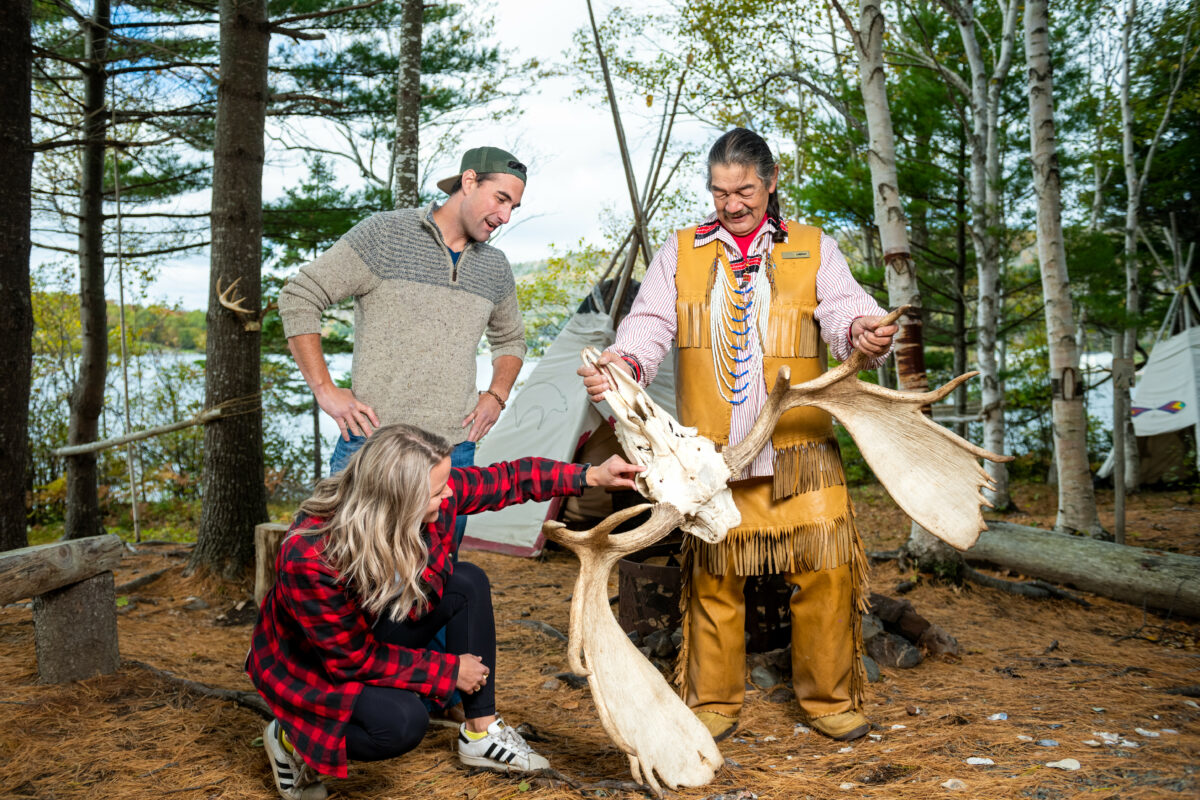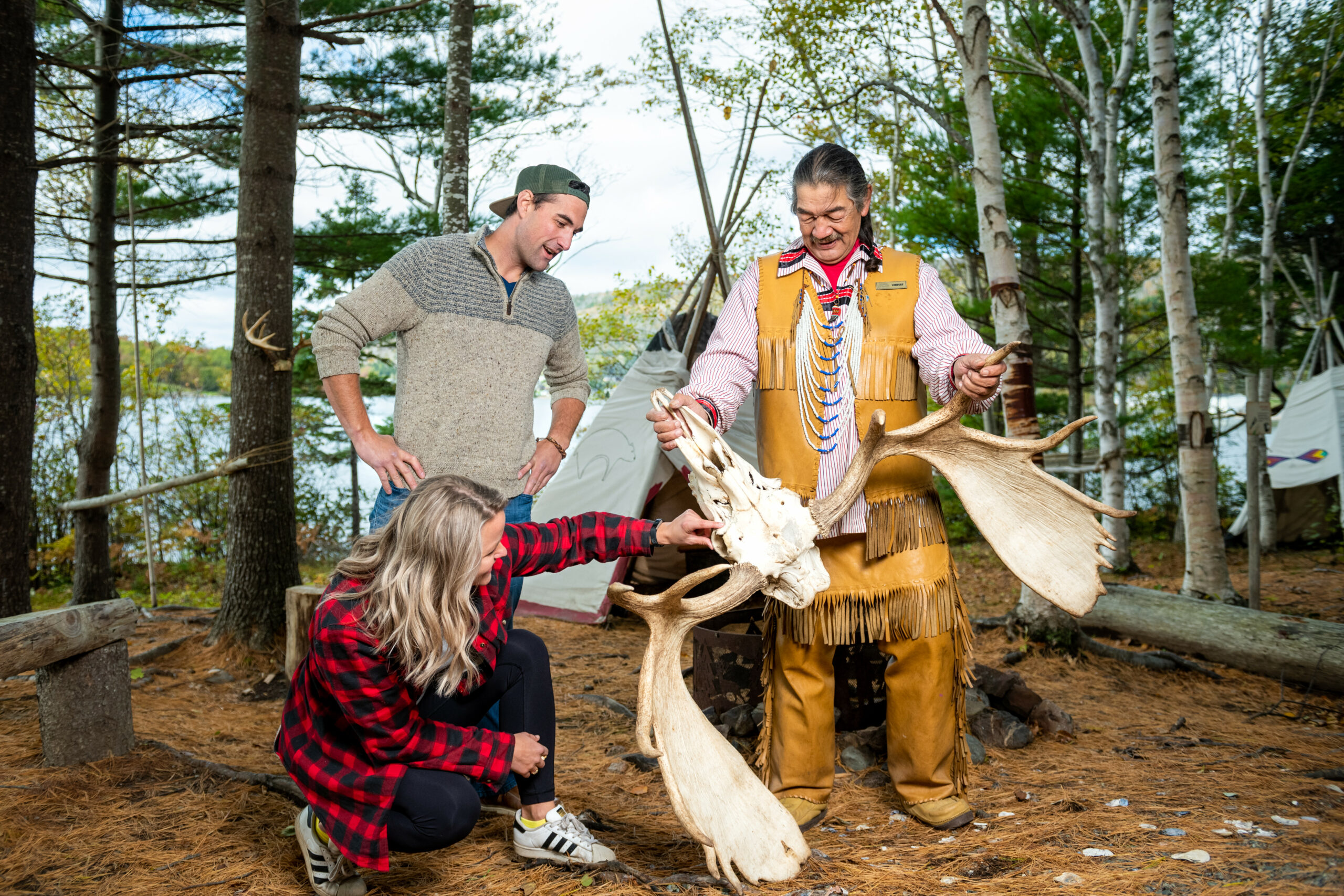Eskasoni Cultural Journeys refines holistic approach to tourism

To many people, Nova Scotia tourism brings to mind beaches, whale-watching or maybe a visit to a museum.
But an Indigenous community in Cape Breton is offering a deeper plunge — inviting visitors to discover a culture, lifestyle and knowledge that were once almost lost and now are proudly shared.
Eskasoni Cultural Journeys’ tourism initiative began in 1968, when then Eskasoni chief Levi R. Deny designated all of Goat Island for tourism ventures. Deny died before his vision became reality; it fell to his grandson, elders and youth from the community to fully develop the concept. It all came to fruition in 2012 when their organization began offering an immersion experience into Indigenous culture and life.
The journey takes visitors along the island’s 2.4-kilometre trail, situated along the Bras d’Or Lakes, where they can choose to take part in activities such as observing a smudging ceremony, traditional dances, visiting the trading post, learning about the art of basketry, and baking traditional Four Cent cake over an open fire. Group and self-guided kayaking tours are also available.
There are also more sobering aspects: modern expositions related to murdered and missing Indigenous women as well as children of residential schools, which help visitors understand a people who have endured centuries of systemic racism.
Faye Sylliboy, manager of Eskasoni Cultural Journeys, says “it’s critical to share the culture and break barriers between different cultures.”
“Teaching people and teaching different cultures about the First Culture and the First People that were here is important. Because there are a lot of people that actually don’t know a lot about Indigenous people and sometimes this place is their first time learning,” Sylliboy says.
The site is on the map for local schools and universities, and because of its proximity to the city of Sydney, it is also a destination for international visitors each year, many of them cruise ship passengers. According to a count done in 2016, Eskasoni Cultural Journeys received over 3,000 visitors, but Sylliboy says this number has greatly increased over the years.
Sylliboy says many people are surprised to learn instruments and games were once banned by colonial authorities and knowledge of them almost lost. One specific game, Waltes, which dates back thousands of years, was banned for almost 75 years.
“When people get here, they don’t know what to expect and when they’re done the tour, they really are amazed, because they’ve learned so much,” says Sylliboy.
“I’ve had people that (have) actually come here three times for a tour, because every year we try to add something new.”
The Goat Island venture is also having an economic impact on the community of Eskasoni by creating employment and offering transferrable skills. The gift shop also supports Indigenous artists and features locally made Mi’kmaw craft and other Indigenous products from across Canada.
Robert Bernard, executive director of Nova Scotia Indigenous Tourism Enterprise Network, says tourism organizations such as Eskasoni Cultural Journeys highlight the importance and responsibility of welcoming people to Mi’kma’ki ancestral lands.
“It’s important because it’s a major part of our history and is the story of this land, but it hasn’t always been included in part of the major tourism taking place,” Bernard says.
Bernard says Indigenous people should have more say in growing Indigenous programs, especially in the tourism industry, along the lines of the Eskasoni model.
“What we’ve found in our journey in the last 12 years is that we define tourism in a different way. We define tourism in a collective, holistic way that involves culture, history and the journey back to helping society to better understand who we are as the First People in these ancestral lands of the Mi’kmaq,” Bernard says.
The newest addition to the tourism attraction is the medicine tour; it’s one of the programs made possible by a $500,000 grant from the Atlantic Canada Opportunities Agency (ACOA). The funds, which went to 53 different tourism projects across Nova Scotia, also helped Eskasoni Cultural Journeys improve their programs and facilities. Among other things, they helped build a kayak shed and provide further training for the kayak program.
On receiving the funding boost, Sylliboy says “It feels good to be recognized.” But she’d like to see the tourism attraction continue to grow and feels there is even more potential to add to the immersive tourism experience. She’d like to see it become a day and night experience and eventually a year-round operation.
Meanwhile, the team of eight keeps working hard to teach Mi’kmaw culture, traditions and language — and to keep them alive. “It’s all important and it’s great to learn,” Sylliboy says.
“I’m proud of being able to teach people about who we are, where we come from, what we do and also, importantly, teaching how our ancestors lived and what they went through.”
For more information contact: Eskasoni Cultural Journeys www.eskasoniculturaljourneys.ca Atlantic Canada Opportunities Agency www.canada.ca/en/atlantic-canadaopportunities.html Nova Scotia Indigenous Tourism Enterprise Network www.nsiten.com




